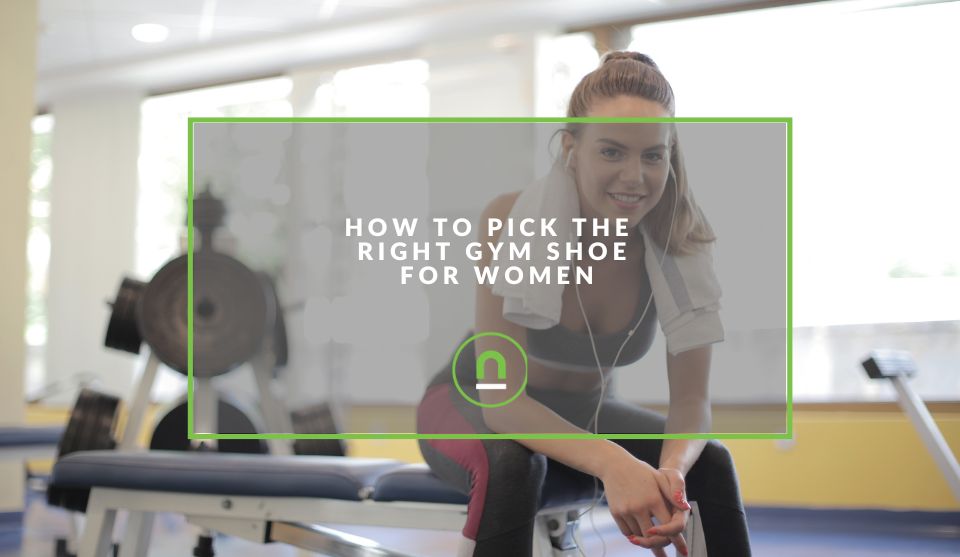Recent posts

Industry Experts
Common ASO Mistakes African App Developers Make
09 January 2026

Ace of Trades
The South African Industrial Tech Revolution
05 January 2026

nichemarket Advice
Why Video Production Companies Still Outshine AI
24 December 2025

Press Releases
Where You Can Find International Remote Jobs For South Africans
23 December 2025
Popular posts
Extravaganza
Trending Music Hashtags To Get Your Posts Noticed
24 August 2018
Geek Chic
How To Fix iPhone/iPad Only Charging In Certain Positions
05 July 2020
Extravaganza
Trending Wedding Hashtags To Get Your Posts Noticed
18 September 2018
Money Talks
How To Find Coupons & Vouchers Online In South Africa
28 March 2019
How To Pick The Right Gym Shoe For Women
15 October 2022 | 0 comments | Posted by Nicole D'Almeida in Athletes
These days, shoes come in all sorts of shapes and sizes, which can make choosing the perfect fit tough. There's a reason why they vary so much, however, as picking the right or wrong shoes ultimately affects your performance. This is why it's so important to make sure that you are choosing the right one, and that starts with knowing what to look for in a shoe.
How to find the right women's gym shoes for you
Instead of breaking a sweat just trying to find the right shoe for you, there are a few key things that you can look out for in a gym shoe. First, you'll need to decide what you need them for. Ultimately, there are three types of gym shoes - Running shoes, training shoes and lifestyle shoes.
If you're planning on running for less than 20 minutes at a time, then you should be able to use your training shoes for your treadmill runs as well as for your usual training. If you're looking to run for longer than 20 minutes, you'll need to get a separate pair of running shoes designed specifically for running.
Lifestyle shoes are fine for walking around, but they shouldn't be used for running, dancing or training. On occasion, you might find that lifting weights is also okay to do in your every day sneakers.
Running shoes
At a glance, you'll notice that running shoes tend to have thicker soles or platforms than training shoes. If you take a closer look, you'll be able to see that certain running shoes have a smooth bottom, whereas others have uneven bottoms with small indents. This is because you get two main types of running shoes, indoor and outdoor. All running shoes are designed with cushioning to support your feet when they are moving in a forward motion.
The difference between indoor and outdoor running shoes
It's important to be able to tell the difference between indoor and outdoor shoes because they both offer you protection and performance in different ways. Indoor running shoes are the ones with smooth soles or platforms. This smooth, flat surface is best designed for the treadmill or a smooth running track.
Outdoor running shoes are the ones with indents or uneven soles or platforms. They are designed this way to provide you with extra traction and grip, which is necessary when you are outdoors in harsh or slippery elements. These shoes are also fine to use for your street runs on sidewalks or tar roads.
Things to consider when looking at the size and fit of your shoes
When choosing the right one for you, make sure that there is still some space around your toes so that they can move freely without being restricted. It's also important to keep in mind that your feet tend to swell a bit when you run, so don't be scared of a little wiggle room. Your foot arch also determines which shoe you should get, as it may be higher or lower than what's considered a normal arch.
The foot arch test
One way that you can figure out the type of arch you have is by wetting your foot and placing it on a dry paper towel. When you remove your foot, your imprint should give you a clue as to whether you have a high, low or normal arch. The less of an imprint, the higher your arch.
Training shoes
Unlike running shoes, training shoes tend to have thinner soles or platforms. Instead of cushioning that is designed to support and protect your feet in a forward motion, they support and protect your feet from all directions. This means that training shoes have padding on the sides, too. All this support means that training shoes can usually be used for most of the activities or exercises that you have planned when visiting the gym.
Some training shoes will go all the way up to your ankles in order to offer your feet even more protection and keep your feet that much more stable. In addition to the extra padding they provide, they also have grips on the sides to give you more resistance.
How often should you replace your shoes?
How often you'll need to replace your shoes really depends on how often you use them, as well as the type of conditions you intend on putting them through. On average, you'll probably need to replace your training shoes every 7-8 months. If the cushioning on them looks hard, it's probably a good indicator to get a new pair.
For runners, it's a slightly different story. In general, the padding on your running shoes will probably start wearing away after about 500-800 kilometres, depending on the conditions of where you're running.
What will happen if I don't replace them?
Once your shoes really begin to deteriorate badly, your feet won't have the right protection you need. Your performance might also decline, as you won't have the same level of grip or comfort as you used to. In the worst case, you might even sustain an injury, which could cost you a lot more than a fresh pair of kicks to rehabilitate. Even worse, the injury could even take you out of the game entirely.
Are you looking to promote your business?
Sport-related businesses can create your free business listing on nichemarket. The more information you provide about your business, the easier it will be for your customers to find you online.
Registering with nichemarket is easy; all you will need to do is head over to our sign-up form and follow the instructions. If you require a more detailed guide on how to create your profile or your listing, then we highly recommend you check out the following articles.
Recommended reading
If you enjoyed this post and have time to spare, why not check out these related posts and dive deeper down the rabbit hole that is fitness
- Get Your Fitness & Wellbeing Related Business Listed Online
- GoPro: capturing your adventures on the go
- When Should You Be Replacing Your Running Shoes?
- 8 Fitness Apps to Help You Get in Shape Fast
- Fitness Apps That Pay You In Cryptocurrency
- 6 Considerations Before Starting A Home Gym
- Habits That Hurt Your Workout
- How Exercise Reduces Stress and Anxiety
- 6 Major High-Intensity Interval Training Mistakes You Are Making
Tags: Fitness, Workout, Fitness Wear
You might also like
Why Video Production Companies Still Outshine AI
24 December 2025
Posted by Che Kohler in nichemarket Advice
A review of traditional video production versus generative AI videos and why businesses might be tempted to go the cheaper route, but it might cost y...
Read moreThe South African VAT Threshold Chokehold
05 December 2025
Posted by Che Kohler in nichemarket Advice
How South Africa's R1 Million Limit Keeps Small Businesses From Developing, And Why Even Adjusting For Inflation Alone Would Free Up Burdens On Small...
Read more{{comment.sUserName}}
{{comment.iDayLastEdit}} day ago
{{comment.iDayLastEdit}} days ago
 {{blogcategory.sCategoryName}}
{{blogcategory.sCategoryName}}

